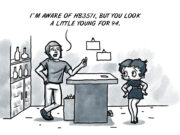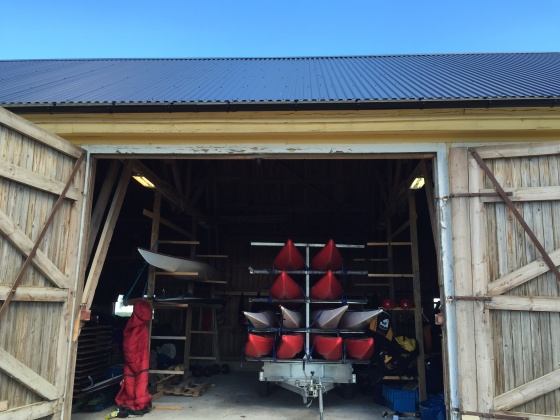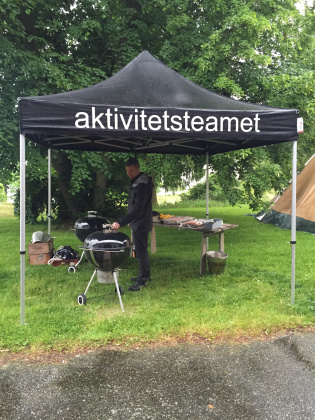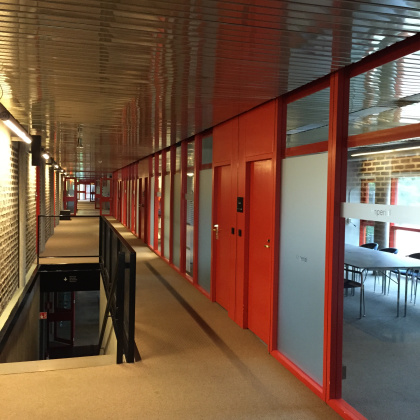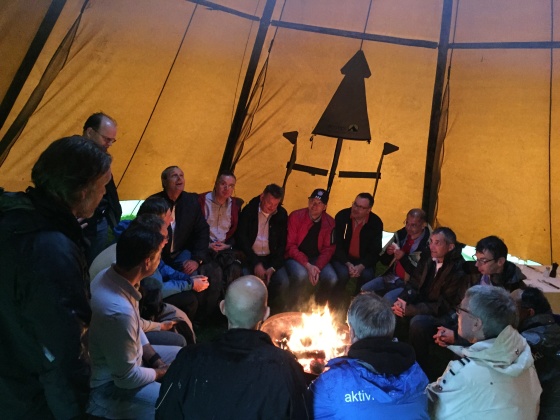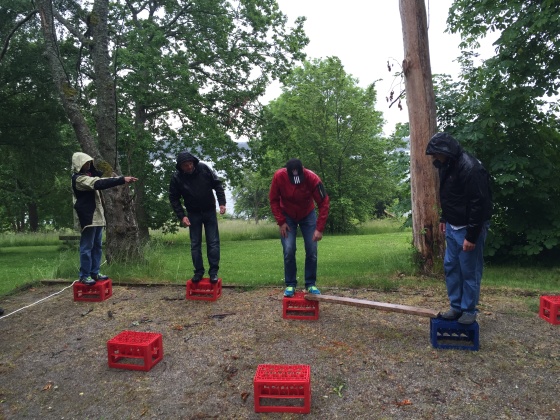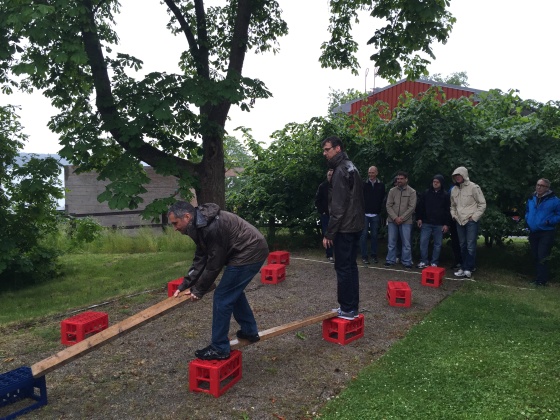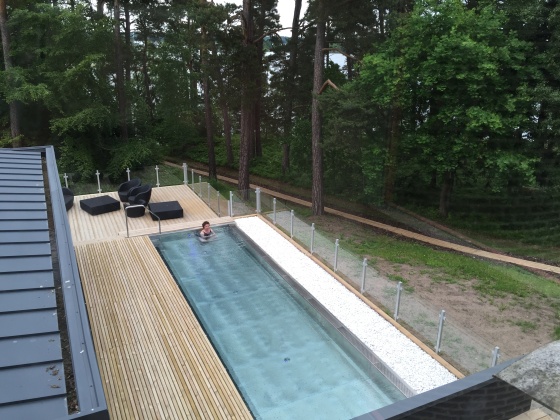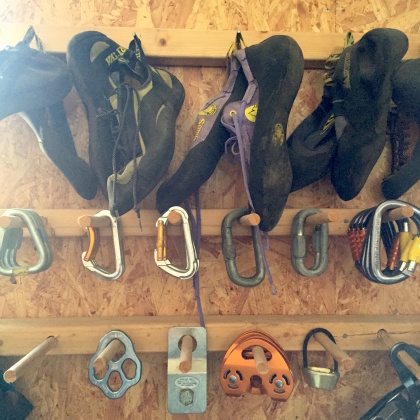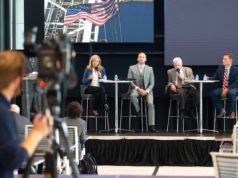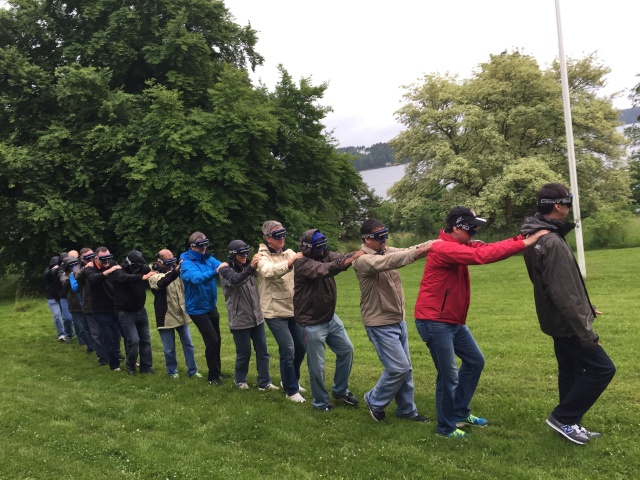

What do you do when a company’s management or executives live and work in different places?
The answer may be the same as any other corporate attempt to improve workplace relations: get them together, away from work, and have them bond over activities wholly unrelated to their jobs. The idea is that bonding over humbling attempts at nearly impossible Jenga-like challenges may help you like and trust your co-workers more during regular business hours. I think this sort of team building makes sense in most scenarios, unless your job is being a member of Congress.
On my trip this past June to Sweden, I was able to observe a team-building approach that revolves around outdoor challenges and intellectually stimulating tasks that encourage innovation and generous input from all team members. The Aktivitetsteamet, based in Stockholm, Sweden, translates simply as, “The Activity Team.”
The company was created in 2000 by Andreas Lindqvist, Tom Jansson and Pär Lindblom. They have built a reliable roster of about 35 clients from Europe and other international spots. They use Sweden’s breathtaking natural environment as the backdrop for outdoor challenges and relaxing socializing once the work is done.
The client for the June retreat I was allowed to observe was the world’s largest auto safety parts company, Autoliv. The Swedish-American company has senior management scattered all over the globe, from Michigan to Germany to India. The retreat was a half-day event and took place at a beautiful little nook of an island in Stockholm named Lidingö Island. This was the home for IBM’s educational center for northern Europe, but it was bought in recent years by a hotel group and is now the conference-hotel destination Blue Hotel.

The 15 or so Autoliv executives arrived around 4 p.m. and listened to the itinerary of outdoor activities over coffee as it began to rain. When it rains in the Scandinavian summer, it is almost always a cold rain, so this was going to be an interesting retreat.
The solution is simpler than the plan
Much like you may have experienced in your own team-building forays, the series of challenges this day required small groups to attack logistical or geographic predicaments by efficiently choosing a quickly summarized mini-group-sourced action plan. Inevitably, the solution is often simpler than the group-sourced plan. In fact, what are supposed to be group-sourced approaches sometimes aren’t that at all. Some of the more socially hesitant team members often stay quiet while the type-A colleagues jump in to show “leadership” and what they think are logical ideas for success.
A big takeaway from this team-building retreat — and others I have participated in — is the prevalence (particularly among men) of an oft-mistaken theory of leadership. People seem to think leadership is a show of initiative by someone, often under the clock, to get an executable plan together quickly from some input from a few others, and then frantically give out marching orders to the team. In reality, the few teams who actually successfully complete these well-designed challenges almost always have leadership displayed by one or more teammates who facilitate valuable discussion and brainstorming among most of the group. Also, these facilitators usually enable the quieter team members to speak up. They often also empower teammates to step forward into roles that play to each of their strengths.
Usually the urge against taking this successful approach is the worry about the time constraint, and yes, considerably more time is often spent arriving at a successful plan. However, the limited time on the clock to execute said plan is often not an issue because all the work was needed to arrive at the solution. Once the solution was agreed upon, executing it didn’t take much time. That significance of group brainstorming and the emotional intelligence needed to identify the team strengths reminds me of this interesting NPR piece on The Second City theater group in Chicago. The Second City spends as much time helping corporate executives these days as they do actually putting on live shows. Their niche for training better business team leaders centers on teaching the soft skills inherent to improv: how to read a room (your employees) and encourage every crazy idea to be thrown up on the whiteboard.
After each group challenge at a retreat, Aktivitetsteamet co-owner Andreas Linqvist leads participants for a de-brief in the large Saami teepee they travel with. This is helpful because it gives the teams an opportunity to learn from their inevitable first-round mistakes and tweak their roles and dynamics as they move through the remainder of the retreat.
After the two to three hours the Autoliv managers spent getting wet in the rain and racking their engineer-like brains, they were able to retreat to the teepee for some American-style barbecue, European craft beer and some lighthearted socializing before Andreas facilitated a final “take away” session.
Andreas shared with me his program’s overall hope is that, by the final discussion session, team members are connecting challenges from the retreat experience to work system problems they find on the job back home. This happened over dinner as the Autoliv attendees made several interesting analogies from that afternoon to the roles and dynamics they encounter on the job overseeing new airbags and anti-lock brakes. From their body language and self-deprecating laughter, one can sense they found the process beneficial, or perhaps they were just grateful to be by the fire and no longer wet or cold.
As they ate dinner, they invited me to put my pen and notebook down and join them. I gave my feedback on how I thought they performed, but I was more interested in knowing how many Autoliv parts are in my car. The answer: a lot.
When one German engineer who works for Autoliv in northern Michigan heard I was from Oklahoma, he recounted an entertaining story of how he and some colleagues test-drove new Corvettes for GM and Autoliv in the late 1990s near Boise City as they transported the vehicles across the country.
I wasn’t able to locate any footage from this makeshift high-speed test track near Black Mesa, but I imagine it went something like this.




